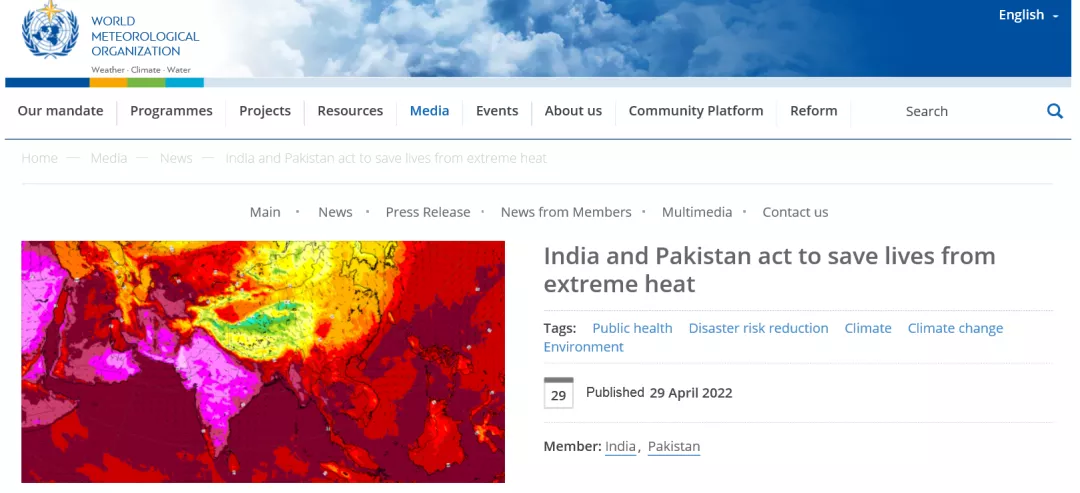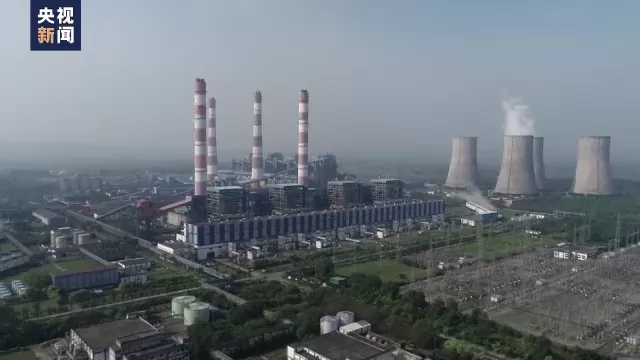[ ] ( /45.htm )
] ( /45.htm )
According To CCTV's Financial Microblog On May 1, Coal Inventories In Many Parts Of India Have Been In Urgent Recently, Facing The Most Serious Power Crisis In Recent Years. Indian Media Reported On April 30 That The Country's Railway Department Decided To Stop More Than 700 Passenger Trains And Give Priority To Ensuring Coal Transportation In Order To Alleviate The Current Situation Of Coal Shortage. In Addition, Many Places In India Have Been Hit By Heat Waves In Recent Days, Further Exacerbating The Power Shortage.
India's Hottest March Ever
On April 29, The World Meteorological Organization Issued A Document Saying That The Extreme Heat Is Sweeping Most Parts Of India And Pakistan, Affecting Hundreds Of Millions Of People In One Of The Most Densely Populated Areas In The World.

According To The World Meteorological Organization, The Indian Meteorological Department Said That The Maximum Temperature In Most Areas Reached 43-46 Degrees Celsius On April 28, Which Will Last Until May 2.
Similar Temperatures Have Occurred In Pakistan. Pakistan's Meteorological Department Said That In Most Parts Of The Country, The Daytime Temperature May Be 5 ° C To 8 ° C Higher Than The Normal Temperature. The Department Warned That In The Mountainous Areas Of Gilgit Baltistan And Khyber Pukhtukhwa, Abnormal High Temperatures Will Accelerate The Melting Of Ice And Snow, And May Trigger Ice Lake Outburst Floods Or Mountain Torrents In Vulnerable Areas. The Air Quality Has Deteriorated And Large Areas Of Land Are In Extreme Fire Danger.
This Year, India Had The Hottest March Ever, With An Average Maximum Temperature Of 33.1 Degrees Celsius, 1.86 Degrees Celsius Higher Than The Long-term Average Temperature. Pakistan Also Recorded The Hottest March In At Least 60 Years, With Many Weather Stations Breaking Records. For Example, Turbot, A City In Southern Pakistan, Recorded The World's Fourth Highest Temperature On May 28, 2017 - 53.7 Degrees Celsius.
According To The World Meteorological Organization, The Frequency, Duration, Intensity And Coverage Of Heat Waves Before The Indian Monsoon Season In The 21st Century Are Expected To Increase Significantly, And Heat Waves Are Triggered By High-pressure Systems.
The WMO Also Explained That High Temperatures Often Occur In India And Pakistan Before The Monsoon Season, Especially In May. But The Heat Wave Occurs In April, Which Is Less Common.
The World Meteorological Organization Says It Is Too Early To Attribute Extreme Temperatures In India And Pakistan Solely To Climate Change. However, This Is Consistent With The Organization's Expectations Of Climate Change. Heat Waves Are More Frequent, Stronger And Begin Earlier Than In The Past.
In Its Sixth Assessment Report, The Intergovernmental Panel On Climate Change Said That Heat Waves And Damp Heat Pressures In South Asia Will Be More Intense And Frequent This Century. The Ministry Of Earth Sciences Of India Recently Released A Public Publication On Climate Change In India. It Spent A Whole Chapter Discussing Temperature Changes.
The Frequency Of Extreme Warm Weather In India Increased From 1951 To 2015, And The Warming Trend Accelerated (highly Credible) In The Nearly 30 Years From 1986 To 2015. Since 1986, Significant Warming Has Occurred On The Hottest Day, Hottest Night And Coldest Night.
The Frequency, Duration, Intensity And Coverage Of Pre Monsoon Heat Waves In India Are Expected To Increase Significantly In The 21st Century (highly Credible).
According To The Report Of China Business On May 1, On The 30th Local Time, The Indian Meteorological Bureau Predicted That The Temperature In Northern And Western India May Be As High As 50 Degrees Celsius In May, Which Will Have An Adverse Impact On Crops And Industrial Activities. This Reading Is Close To The Highest Level In India In 122 Years.
India's Power Crisis Hundreds Of Passenger Trains Stopped To Make Way For Coal
According To CCTV News On May 1, Coal Inventories In Many Parts Of India Have Been In A Hurry Recently, Facing The Most Serious Power Crisis In Recent Years. Indian Media Reported On April 30 That The Country's Railway Department Decided To Stop More Than 700 Passenger Trains And Give Priority To Ensuring Coal Transportation In Order To Alleviate The Current Situation Of Coal Shortage.

About 75% Of India's Electricity Comes From Coal Power Generation, With An Annual Coal Consumption Of More Than 1 Billion Tons, Of Which Coal-fired Thermal Power Plants Account For More Than Three-quarters.
At This Stage, At Least 108 Of India's 173 Coal-fired Thermal Power Plants Are In Urgent Stock, Resulting In Power Shortages In Maharashtra, Punjab And Jharkhand. In The Northwestern State Of Rajasthan, Factories And Rural Areas Need Power Cuts For Four Hours A Day To Ease The Pressure On Electricity.
In Addition, Many Places In India Have Been Hit By Heat Waves In Recent Days, Further Exacerbating The Power Shortage. On April 28, The Peak Demand For Electricity In India Reached A Record 204.6 GW. According To Indian Media Reports, The Coal Inventory Of Indian Coal-fired Power Plants On The Same Day Is Only Enough To Maintain For 8 Days, Which Should Normally Be 24 Days.

In Response To The Coal Shortage, Indian Coal Corporation, India's Largest Coal Producer, Increased Production By 27.2% In April. The Railway Department Announced The Suspension Of 753 Passenger Trains To Free Up Capacity For Coal Transportation. Among Them, 713 Passenger Trains Will Be Suspended Until May 25 And 40 Will Be Suspended Until May 8. In Addition, The Indian Government Also Requires All Localities To Increase Coal Imports And Inventory In The Next Three Years.
India's Electricity Demand Is Expected To Increase Further In The Coming Months, With A Peak Of 215 To 220 GW. Indian Government Officials Hope The Power Crisis Will Ease When The Weather In The South Is Cooler. However, Some Experts Pointed Out That The Months Before The Rainy Season Are Often The Time For Indian Thermal Power Plants To Increase Coal Stocks, And The Coal Shortage During This Period May Mean A More Serious Crisis Later This Year. With The Advent Of Rainy Season, Coal Production And Transportation Will Be Adversely Affected.